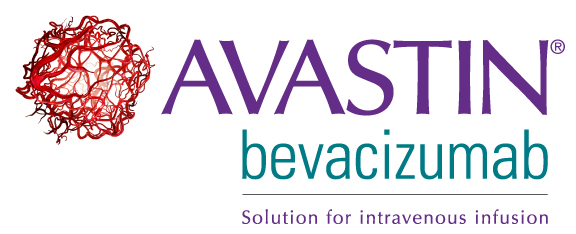Home > Treatment Options > Tumor Suppressors > Clinical Trials >
Bevacizumab (AvastinTR)
Last Updated: 03/7/25
biosimilar (MVASI™)
Status: Approved Treatment in Most Countries
3) Alymsys (bevacizumab-maly), 4) Vegzelma (bevacizumab-adcd), 5) bevacizumab systemic,
6) Allergan's Bevacizumab-aww (MVASI™), and 7) 216974-75-3,
and biosimilar (MVASI™)
Angiogenesis Inhibitor
Also See: NF2 Informal Avastin Study
1. Basic Information
Bevacizumab (Avastin™) is a clinical trial treatment of a chemotherapeutic molecular targeted tumor therapy. Avastin had been in use for cancer conditions before the trials for the condition neurofibromatosis type 2 (NF2). Schwannoma on the vestibular nerve, also known as vestibular schwannoma (VS) is the only tumor and location it had been found to have significant effects on since trials began in 2009. VS was the only tumor type at that location it was closely monitored for until 2015 when trial expanded for meningioma and ependymoma. No results shared for changes in meningioma or ependymoma can be found here at this time and assume for VS tumors only.
Individuals with NF2 have and can remain on Avastin™ until; 1) side effects become dangerous or uncomfortable, 2) breaks for other medical treatments like surgeries are necessary, 3) proof of lack of tumor change, or 4) the treatment is no longer necessary.
To date, a few have managed to have Avastin™ may hold or slow down the growth of VS up to ten (10) years, but many stop the trial after two (2) years. A few left the trial for attempts at more effective trials, but in the last year, a few on Avastin starts a new trial of a combination of Avastin™ and other medications people have done well in trials in goals of better results.[1]
Awareness of possible side effects allow people to remain on Avastin™ longer.[1]
Avastin™ is not an approved treatment by the Food and Drug Administration (FDA) for NF2.
2. Delaying Avastin™ Side Effects
Major side effects are uncommon. Since people with NF2 are taking these medications at a low dose, only minimal side effects are common. However, following long term use is primarily where these major side effects take place. A blood and urine tests should be included the day of each treatment is necessary to review organ health that can help indicate recommendations in food or drinking habits that may be needed for continuation of treatment to prevent organ failure. Talk to your doctor.
- Hydration: Many of the side effects below are hydration issues; drink as much water as you can.
- Kidney Failure: In a urine test, this can be found if there is too much protein in urine. Look for dark colored urine.
- Gastrointestinal Perforation: Hole in Stomach, Small or Large Intestines. Symptoms - Abdominal Pain, Nausea, Vomiting, Constipation and Fever.
- Severe Bleeding: Coughing up Blood, Bleeding in the Stomach, Vomiting Blood, Bleeding in the Brain, Nosebleeds and Vaginal Bleeding.
- Dry Eyes resulting in Cracked Cornea: Make sure eyes stay lubricated with eye drops of some sort. Not limited to patients with dry eye issues prior to taking medications, but all people with NF2.
- Nausea: Nausea is easily managed with Zofran.
- Pregnancy: Doctors should include a discussion of freezing either eggs or sperm before starting treatment with all patients.
- Premature Ovarian Failure (POF) Early Menopause: Women should have FSH (Follicle-Stimulating Hormone) and Estradiol Levels regularly checked. - Learn More about POF
3. Possible Avastin™ Side Effects
List of Most Common Issues
- Dry Sinuses
- Dry Eyes
- Dry Skin
- Dry Throat
- Fatigue
- Headaches
- Impaired Wound Healing
- Irregular Menstrual Cycle
- Nausea
- Skin Rash
Complete Side Effects List
- Dry Sinuses
- Abdominal Pain
- Back Pain
- Bowel Perforation
- Brain Bleeding
- Cracked Cornea
- Dry Eyes
- Dry Skin
- Dry Throat
- Fatigue
- Headaches
- Heart Attack
- Heart Problems
- High Blood Pressure
- Hoarseness of Voice
- Impaired Wound Healing
- Inflammation of The Nose
- Irregular Menstrual Cycle
- Leg Pain
- Liver Failure
- Liver Problems
- Mouth Sores
- Nasal Septum Perforations
- Nausea
- Nephrotic Syndrome
- Nose Bleeds
- Premature Ovarian Failure
- Protein in Urine
- Rectal Bleeding
- Sensitive Tongue
- Skin Rash
- Stroke
- Taste Change
- Tear Production Disorder
4. Other Uses for Avastin™
Treatment for:
- Advanced non-small cell lung cancer (NSCLC)
- Metastatic colorectal cancer (mCRC)
- Metastatic kidney cancer (mRCC)
- Glioblastoma Multiforme (GBM)
- Breast Cancer, Metastatic
- Colorectal Cancer
- Glioblastoma Multiforme
- Macular Degeneration
- Malignant Glioma
- Neurofibromatosis Type 1
- Non-Small Cell Lung Cancer
- Ovarian Cancer
- Pancreatic Cancer
- Renal Cell Carcinoma
- Solid Tumors
5. Frequently Asked Questions
Issue 1: What Tumors Might Change?
Avastin™ does not help everyone. It would be unknown which tumors might be affected, by what percentage and possible none.
Issue 2: Side Effect Concerns?
Side effects are generally minimal, tests can be done to stop in to manage issues to prevent them from becoming worse. However this often requires lowering dose or stopping treatment of Avastin™.
Issue 3: How soon before surgery do I need to stop Avastin™?
- Before: If surgery is required, a wait would be required of two months before surgery would be possible. This wait could give tumors time to do more damage.
- After: A break after surgery is also be required to properly recover before it would be safe to start again. It can take as little as one month to recover from surgery, but can take up to 3 years to completely heal from certain nerve damage. Avastin™ is known to result in lowering wound healing ability and could minimize the amount of healing after surgery if started to soon.
- Other Issues: Breaks in treatment of Avastin™, for even a few months, have resulted in increased tumor growth where tumors have regrown back to the original size they were prior to starting Avastin™.
6. Avastin Studies Results so Far
There appears to be stabilisation of index tumour growth and at times regression of tumour while on Bevacizumab. There is symptomatic benefit for patients in parallel for both vestibular and peripheral schwannomas. [Smole, Z. et al., 2014]
7. Sources
- Socinski, Mark A., et al. "A bioequivalence study of proposed bevacizumab biosimilar, MYL-1402O (A) vs EU-Avastin (B) and US-Avastin (C)." (2017): Journal of Clinical Oncology e14034-e14034. Source: http://ascopubs.org/doi/abs/10.1200/JCO.2017.35.15_suppl.e14034 | DOI: 10.1200/JCO.2017.35.15_suppl.e14034
- ClinicalTrials.org "Clinical Trials." (August 11, 2015) Source: https://clinicaltrials.gov/ct2/show/NCT02469987
- NF2 Information and Services (2012) "NF2 Avastin Informal Study Results." Source: https://nf2is.org/avastin_study_results.php
- Plotkin, S. R., Stemmer-Rachamimov, et al. "Hearing improvement after bevacizumab in patients with neurofibromatosis type 2." New England Journal of Medicine (2009)361(4), 358-367. Source: http://www.nejm.org/doi/full/10.1056/NEJMoa0902579
- Jeyaretna, D. S., Curry, W. T. et al. "Exacerbation of cerebral radiation necrosis by bevacizumab." Journal of Clinical Oncology 29(7), e159-e162. (2011) Source: http://jco.ascopubs.org/content/29/7/e159.short
- Plotkin, S. R., Merker, V. L., et al. "Bevacizumab for progressive vestibular schwannoma in neurofibromatosis type 2: a retrospective review of 31 patients." Otology & Neurotology 33(6), 1046-1052. (2012) Source: http://journals.lww.com/otology-neurotology/Abstract/2012/08000/Bevacizumab_for_Progressive_Vestibular_Schwannoma.25.aspx
- Smole, Z., Thoma, C. R. et al. "Tumor suppressor NF2/merlin is a microtubule stabilizer." Cancer Research, 74(1), 353-362. (2014) Source: http://www.neurology.org/content/82/10_Supplement/P3.326.short




 |Google Play
|Google Play